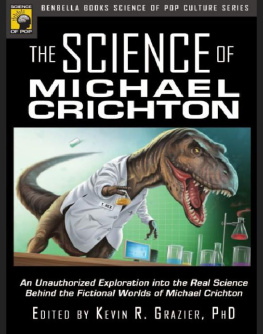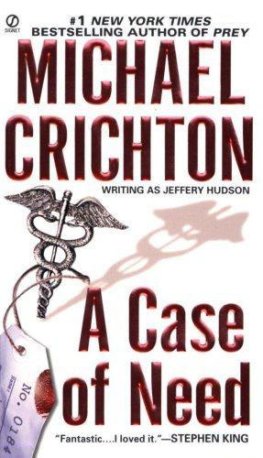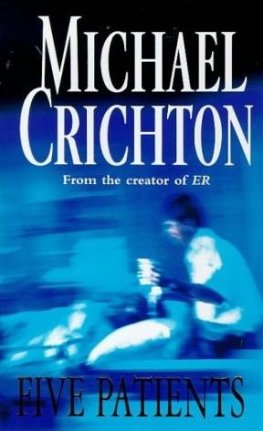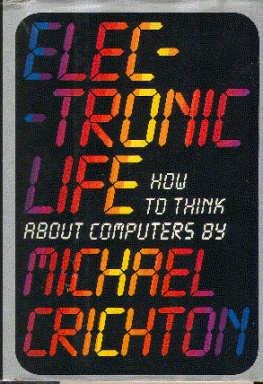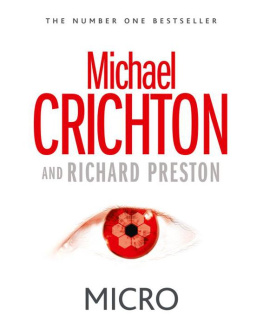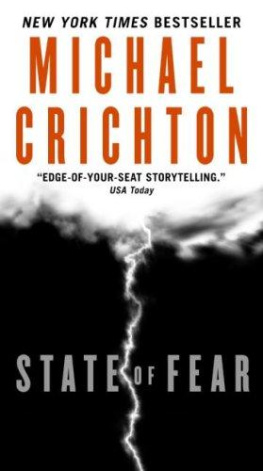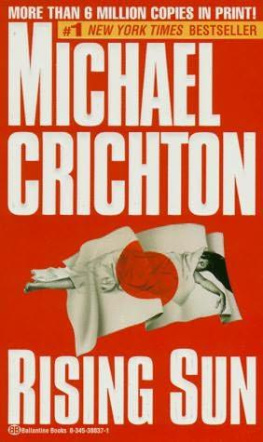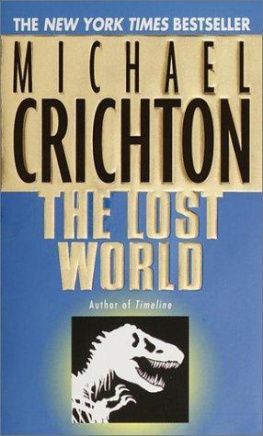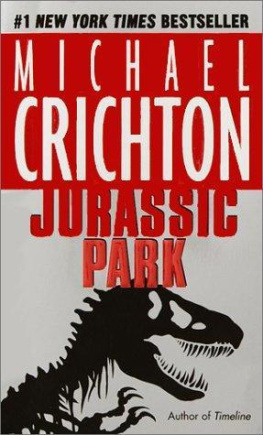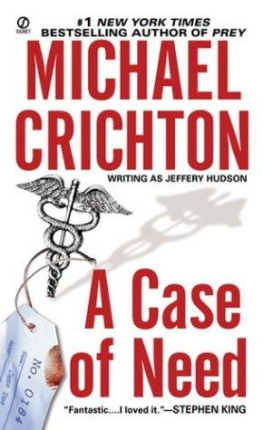THE ANDROMEDA STRAIN
Sergio Pistoi
On 28 September 1969 the Murchison meteorite fell in Victoria, Australia. Within that meteorite were compounds related to sugars, and more than seventy amino acidsthe building blocks of earthly lifefifty of which are not present on Earth. On the Space Shuttle Atlantis mission STS-115, twenty-seven years later, Salmonella typhimurium bacteria showed a dramatic increase in virulence as a result of space flight. Sergio Pistoi, Ph.D., examines The Andromeda Strain which, suddenly, seems really quite plausible.
This book recounts the five-day history of a major American scientific
crisis.
As in most crises, the events surrounding the Andromeda Strain
were a compound of foresight and foolishness, innocence and ignorance.
Nearly everyone involved had moments of great brilliance, and
moments of unaccountable stupidity.
MICHAELCRICHTON, foreword to The Andromeda Strain
ATE 1960s. A secret military satellite, sent into deep space by the army to look for new forms of life, crashes near a small village in Arizona, spreading a mysterious and deadly extraterrestrial organism. People coming into contact with the organism die instantly, because the bug causes all their blood to clot solid. Its something nobody has ever seen on Earth. Something that could potentially destroy humanity if it spread.
The Andromeda Strain recounts the drama of four scientists fighting against that lethal creature from space. Researchers start by exploring the village and by collecting samples of the mysterious organism, while the army isolates the area. They still have no idea of what they are facing, and they dont know how to stop that deadly invasion. But they have found two survivorsan old, alcohol-addicted man and an always-crying newborn baby. Whatever the old man and the baby have in common, it must hold the key to understanding how the deadly organism works and how it can be stopped.
Michael Crichton published The Andromeda Strain in 1969, when he was still a graduate student at the Harvard Medical School. It was his first bestseller, making him known worldwide as an emerging literary star. The story has all the ingredients of a great bio-thriller, and at the same time reflects Crichtons medical and scientific background and his ability to mix real science with creative, but plausible fiction. Crichton wrote the novel in a false-document style, mixing references to real scientific publications and to fictional classified documents, like he was recounting real events. Also, the portraits of researchers are quite realistic in the way they collect data about the organism (code-named Andromeda, hence the title) and use scientific knowledge and intuition to formulate hypotheses about its nature. Its also interesting that, apart from the inevitable science fiction touch, much of the equipment and methods described in the book reflects the best technology available during the 1960s.
Consistently with its extraterrestrial nature, Andromeda is astonishingly different from any known form of life; it has no proteins, no DNA, and none of the other building blocks that are typical of terrestrial organisms. Surprisingly, it has the structure of a crystal, something that we associate with inorganic objects such as minerals, not with a living organism. If judged with terrestrial criteria, Andromeda cannot be living. Still, it behaves like a living organism: it is able to reproduce and to infect its victims and, as it will turn out later in the story, it can mutate very rapidly, adapting to its environment.
How plausible is this scenario? Based on scientific evidence, can we imagine alien organisms like Andromeda, so far from our idea of life? If so, how could we protect the Earth from the invasion of alien pests? As weird as they sound, these questions are not just science fiction buffs speculations, but also the subject of many serious and fascinating scientific investigations. But first of all, before you laugh at the idea of a living crystal, ask yourself a question: What do you exactly mean by life?
A Matter of Taste
Surprisingly, a simple question like What is a living organism? has no clear-cut answer. All attempts to scientifically define what is and isnt alive have failed miserably. Of course, we can list some features that are closely associated with life: living organisms are able to reproduce, passing their genes to their offspring; they constantly maintain their internal equilibrium, even when their environment changes (a property that biologists call homeostasis); and they have a metabolism that allows them to transform and store energy. However, none of these features alone can define life beyond reasonable doubt. For example, not all the individuals of a species reproduce. I dont have children, but I was alive last time I checked. On the other hand, many objects are capable of homeostasis and are able to transform energy. Imagine what would happen if an alien landed on a farm while looking for signs of life on Earth and found only a refrigerator and a bag of seeds. Which of the two would look more alive? A refrigerator is capable of homeostasis (because its thermostat actively maintains a constant internal temperature and humidity) and it transforms energy, while the seeds are as inert as stones. You could argue that a refrigerator does not reproduce, but neither do the seeds in the bag, unless they are planted and kept in the right conditions to germinate. In terms of pure evidence, and according to our criteria, the alien would understandably dismiss the seeds as objects, asking to be taken to the refrigerators leader instead.
But we all know that the seeds, not the refrigerator, are the living stuff in the room. So wheres the catch? There is no catch. We can tell that the seeds are living organisms because we know they are part of a biological cycle: although they look inanimate, we know that they have a potential to germinate, giving rise to a plant. Likewise, we say that a refrigerator is not an organism because we know it is a human artifact without any life on its own and without a potential to reproduce. In other words, we cannot define life a priori, but we can recognize it based on what we know about life on Earth.
Our definition of life is so blurred that, eighty years after their discovery, scientists are still debating whether viruses can be considered alive or not. Strictly speaking, viruses are unable to meet the minimum requirements by which we define life: they are sorts of genomic capsules made of proteins and containing a payload of DNA or RNA. Since they cannot read and copy their own genome, like malicious software viruses they must infect other cells and harness their machineries to produce new viral copies that, in turn, infect other cells. Because of that, viruses are molecular parasites without life on their own, living a borrowed life inside other organisms. Are they alive or not? Back in 1962, the French Nobel prize laureate Andr Lwoff put the question in very frank terms: Whether [viruses] should be regarded as living organisms is a matter of taste, he wrote. His famous quote is still very valuable today.
If simple, terrestrial organisms like viruses already are a challenge to our concept of life, how could we recognize alien organisms based upon a different biology than ours if they existed in another planet? Its not a simple question. One problem is that we are so accustomed to our biology that we can hardly conceive a different one. Terrestrial life is like a set of Lego toys: with only a small set of building blocks and a few, simple rules, evolution has given rise to an infinite variety of shapes, species, and functions. From a coliform bacterium to Angelina Jolie, the basic chemical recipe is the same: four elementscarbon, hydrogen, oxygen, and nitrogen (the so-called CHON group)make up 99 percent of the mass of every living creature, while thousands of other elements, including calcium, phosphor, and sulfur, account for the remaining 1 percent. Carbon provides the backbone of all organic molecules and is therefore the basis for the chemistry of life on our planet. In cells, carbon atoms are combined with the other elements to form organic molecules such as amino acids, sugars, fats, and nucleotides, which, at their turn, are the building blocks of bigger molecules such as proteins, DNA, or cellular membranes. Water, which is abundant on Earth, provides the solvent and the chemical environment for all biological reactions. The beauty of the system is that, just like a set of Lego toys, the building blocks are essentially the same for all creatures: by combining, in different ways, twenty amino acids, five nucleotides, and a handful of other molecules, you can obtain every organism on Earth, whether it is a bacterium, a banana, or your neighbor. This scheme works well for our planet; however, astrobiologists warn that its just one of the many possibilities by which life could have evolved in the universe. On another planet, biology could follow a completely different paradigm, for example, by using a different set of building blocks and different rules for their assembly.

